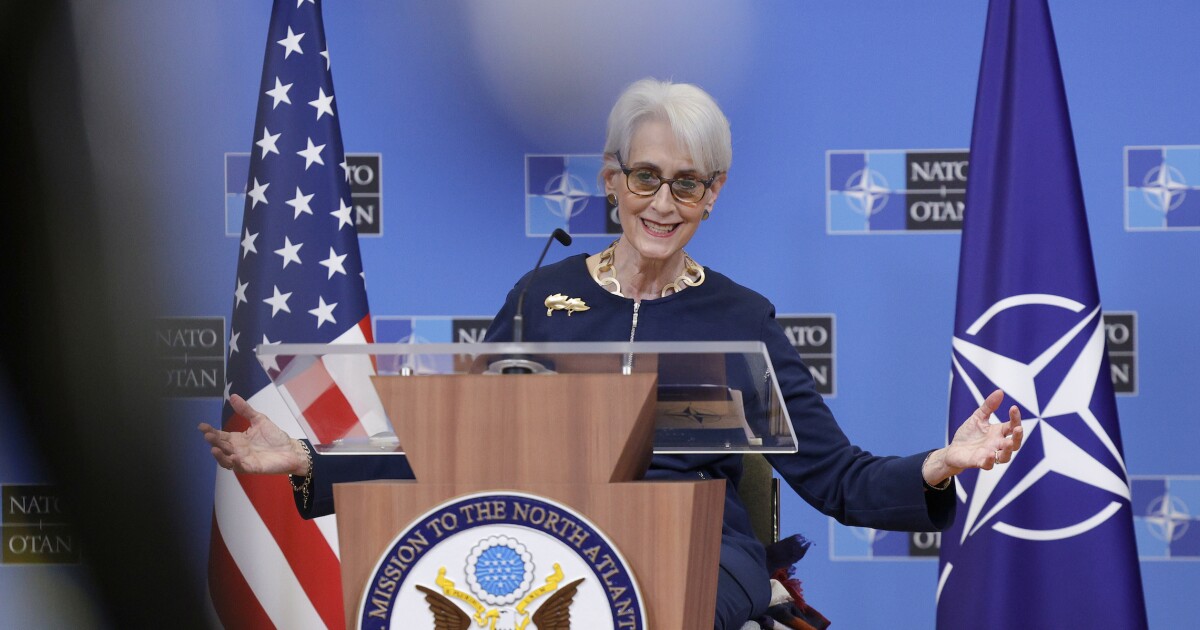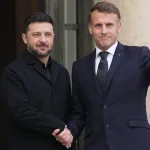

China will have a stockpile of 1,500 nuclear warheads “by 2035,” according to Western officials who worry that technological advances and geopolitical acrimony have raised the potential for nuclear conflict.
“We are now entering a time when transformative technologies like artificial intelligence and quantum computing may add uncertainty to the balance of power and make the question of when to use WMD more complicated, not less,” Deputy Secretary of State Wendy Sherman said Tuesday. “Those leaps forward bring a new degree of fear and uncertainty, along with promise.”
PUTIN BOASTS OF ‘JOINT MILITARY EXERCISES’ IN MEETING WITH CHINESE DEFENSE CHIEF
Those technological advances could complicate strategic decision-making under any circumstances, but Russia
’s campaign to overthrow the Ukrainian government has raised the specter of nuclear weapons on the battlefield. And that war could figure as a portent of threats to come, Western officials suspect, if rogue states and vulnerable nations sense a growing incentive to acquire nuclear weapons of their own.
“We stand at the crossroads — in one direction lies the collapse of the international arms control order and the unrestricted proliferation of weapons of mass destruction, with profoundly dangerous consequences,” NATO Secretary-General Jens Stoltenberg said during a virtual appearance alongside Sherman. “But there is an alternative way ahead, one where we do the work, however difficult, where we build trust, develop new behaviors, and increase our security.”
The difficulty has been heightened by the array of countries modernizing or pursuing nuclear weapons, with China — “which is estimated to have 1,500 warheads by 2035,” according to Stoltenberg — chief among them.
“We don’t regard or assess China as an adversary. But China poses some challenges to our interests, to our NATO values, and to our security,” Stoltenberg said. “And that makes it even more important to engage with China because we see that they’re investing heavily in new modern capabilities, long-range missiles, more than tripling the number of nuclear warheads within a few years. … And the message is that it will be also in the interest of China to have verifiable limits on their nuclear arsenals.”
That message was delivered in parallel earlier this week at an assembly of foreign ministers from the G-7, as the group of the seven-largest industrialized democracies is known.
“The G-7 urges China to engage promptly in strategic risk reduction discussions with the U.S. and to promote stability through greater transparency of China’s nuclear weapon policies, plans, and capabilities,” the G-7 foreign ministers declared in an April 18 joint communique after the meeting in Japan. “Our security policies are based on the understanding that nuclear weapons, for as long as they exist, should serve defensive purposes, deter aggression, and prevent war and coercion.”
China fumed at the communique, which also urged Beijing “to abstain from threats, coercion, intimidation, or the use of force” against Taiwan or in its other territorial disputes around the region. Chinese Foreign Minister Wang Wenbin denounced the G-7’s putative “arrogance, prejudice and deliberate desire to block and contain China” and complained that Japan is protected by U.S. nuclear guarantees.
“Japan has long characterized itself as a victim of nuclear explosions and an advocate of a nuclear-weapons-free world,” Wang said at a Monday press briefing. “But in fact, Japan sits comfortably under the U.S.’s nuclear umbrella, and it is against and hindering the U.S.’s renouncing of the first use of nuclear weapons. Some Japanese politicians even suggest the possibility of nuclear sharing with the U.S.”
Japanese officials fear that China, in light of the example set by Russian President Vladimir Putin, will feel free to attack their neighbors in the confidence that their own nuclear arsenals will deter the United States from intervening to protect an ally or a partner. Similar anxiety intensifies with each North Korean missile test, as well as the “fearsome jump in Iran’s uranium enrichment levels,” as Sherman put it.
“In each case, transparency is almost nonexistent, which only serves to raise the risk of an escalation,” she said.
CLICK HERE TO READ MORE FROM THE WASHINGTON EXAMINER
Such an escalation has not happened since the end of World War II, when the U.S., in a bid to break imperial Japan’s will, became the first and only nation to use nuclear weapons. Yet the prospect of such a crisis presents diplomats with the difficult task of persuading non-nuclear-armed states to stay that way.
“I think in this uncertain environment, a lot of countries are saying, ‘Well, maybe we should join this club because otherwise, we have no deterrence,’” Sherman said. “And NATO is a defensive organization. It is all about deterrence. And so how do we extend that deterrence to the rest of the world?”




